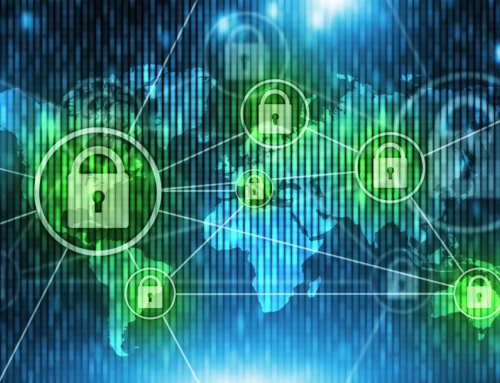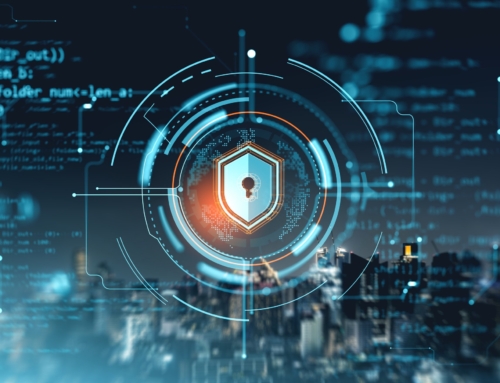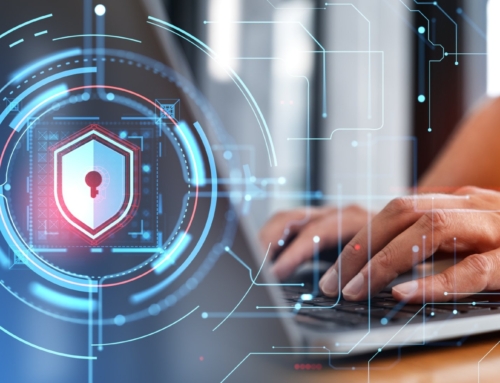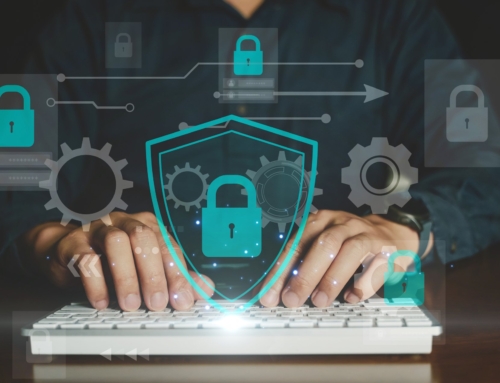Updating Cybersecurity Policies After a Ransomware Attack
Understanding the Threat: Recognizing the Need for Cybersecurity Policy Updates After Ransomware
Cybersecurity policy updates after ransomware have become a critical concern for us at Alvaka. We understand that as cyber threats evolve, our defenses must also adapt. Ransomware attacks reveal the vulnerabilities within our existing cybersecurity frameworks, compelling us to scrutinize our policies and enforce stronger safeguards. It’s not a matter of if, but when a business will face such an attack, making it imperative for our security posture to be proactive rather than reactive.
Assessing the Damage: The Impact of Ransomware on Your Current Cybersecurity Policies
After a ransomware attack, it’s crucial to assess the extent of the damage to our cybersecurity policies. We evaluate the effectiveness of our current strategies and determine where breaches occurred. This assessment provides us valuable insights into how our defenses were compromised, allowing us to identify specific areas for improvement. By doing so, we can ensure that our updated policies address the actual shortcomings exposed by the attack, thereby strengthening our overall cybersecurity infrastructure.
The Road to Recovery: Initial Steps to Take Immediately After a Ransomware Attack
Recovery from a ransomware attack begins with immediate action. We prioritize containment to prevent further spread of the malware within our network. This includes isolating affected systems, securing data backups, and assessing the scope of the intrusion. Our team works diligently to restore operations from secure backups, all while investigating the source and method of the attack. By dissecting the attack’s anatomy, we are better equipped to update our cybersecurity policies to prevent similar incidents from reoccurring in the future.
Identifying Vulnerabilities: Learning from the Attack to Fortify Cybersecurity Policies
When confronting the aftermath of a ransomware attack, we at Alvaka understand that the first imperative step is to conduct a thorough analysis to identify where our defenses were breached. We meticulously dissect the incident, pinpointing how the ransomware infiltrated our network and the weaknesses it exploited. Our analysis extends beyond the attack vector to encompass the broader cybersecurity environment, examining protocols and employee cybersecurity awareness.
Cybersecurity Policy Updates After Ransomware: What Needs to Change?
Given the dynamic nature of cyber threats, cybersecurity policy updates after ransomware attacks are pivotal. These updates are not a mere reaction to an isolated incident; they represent a commitment to an adaptable and resilient cybersecurity strategy. We consider several factors such as the complexity of our network, the sensitivity of the data we manage, and recent cyber threat trends to formulate robust policies that are not only reactive but also anticipatory in nature.
In light of a recent ransomware attack, our policies now emphasize more frequent and comprehensive system backups, enhanced user access controls, and advanced threat detection mechanisms. Additionally, we now enforce stricter guidelines for remote access protocols to counter the vulnerabilities that come with a distributed workforce.
Best Practices in Implementing Updated Cybersecurity Policies Effectively
For policy updates to be effective, they must be communicated clearly and implemented meticulously. Here’s a list of the best practices we follow:
- Conduct regular training sessions to ensure all team members are equipped to comply with new security measures.
- Establish routine security audits to monitor the effectiveness of implemented policies and flag any deviations.
- Involve all levels of the organization in cybersecurity, fostering a shared responsibility for protecting data and assets.
- Deploy phased implementation with clear milestones, allowing for adjustments based on feedback and observed effectiveness.
- Incorporate cybersecurity simulations to test the organization’s readiness against potential threats.
We recognize the importance of remaining vigilant and proactive. Thus, we constantly update and refine our cybersecurity practices to mitigate risks and safeguard against future ransomware threats.
Did you know? After a ransomware attack, incorporating regular policy reviews can significantly increase your defense against future cyber threats.
Monitoring and Maintaining: Ensuring Continuous Improvement of Cybersecurity Measures
In the wake of a ransomware attack, it’s crucial that we don’t only repair the damage but also fortify our defenses to prevent future breaches. At Alvaka, we prioritize a proactive approach to ransomware recovery and cybersecurity. Monitoring and maintaining our cybersecurity policies and systems is a continuous process that requires diligence and constant vigilance. We employ state-of-the-art tools and techniques to scan for vulnerabilities, detect anomalies, and implement patches promptly. This ongoing evaluation and enhancement of security protocols ensure we stay ahead of emerging threats. Regular audits and penetration testing are part of our routine to test the resilience of our systems and policies against potential attacks. It’s not just about defending; it’s about adapting and evolving our cybersecurity measures to meet the demands of an ever-changing digital landscape.
Building a Culture of Cyber Resilience: Training and Awareness After Updating Policies
One of the most significant defenses against cyber threats is a well-informed team. Following Cybersecurity policy updates after ransomware, it’s essential to embed a culture of cyber resilience within our company. At Alvaka, we continuously invest in training and spreading awareness about the latest cybersecurity practices. By educating our staff on the importance of cybersecurity and their role in maintaining it, we build a human firewall that’s just as robust as our technical defenses. Regular training sessions and simulations keep our team alert and prepared to respond to incidents. Our philosophy places emphasis not only on policy and technology but also on people and processes, equipping our workforce to be the first line of defense against cyber threats.
Look Ahead: Staying Prepared for Future Cyber Threats with Regular Policy Reviews
In the dynamic world of IT security, resting on one’s laurels is not an option. Cybersecurity policy updates after ransomware are not a one-time fix but rather a commitment to continuous improvement. At Alvaka, we understand the significance of staying current with the latest threats and security practices. Hence, we make it a point to conduct regular policy reviews, which allow us to refine our strategies and address any new types of vulnerabilities. This systematic approach ensures we’re not only reacting to past incidents but also proactively preparing for the future. We ensure that our cybersecurity policies are alive, reflecting the learning and growth that follow from each challenge we overcome. Armed with the latest knowledge and a forward-thinking mindset, we remain steadfast in our mission to protect and support businesses in their IT management and network service needs.
FAQ
What immediate steps should we take following a ransomware attack? ▼
Firstly, we must isolate the affected systems to prevent the spread of the ransomware. Then, we need to identify the scope of the attack and begin an investigation to understand how the breach occurred. Additionally, we will notify relevant parties, including law enforcement, and begin restoring operations from backups if available. Importantly, our communication throughout this process must be clear and timely.
How does a ransomware attack affect our current cybersecurity policies? ▼
A ransomware attack can expose weaknesses in our cybersecurity policies, indicating areas where we need to improve. For instance, if the attack exploited outdated software, this suggests that our patch management policies are insufficient. As a result, we will need to reassess and update our cybersecurity protocols to address the revealed vulnerabilities.
How can we identify the vulnerabilities that led to a ransomware attack? ▼
After an attack, we conduct a thorough analysis of the incident to identify the entry points the attackers used. This often involves examining logs, user activities, and systems configurations. Based on the findings, we then pinpoint the vulnerabilities, such as inadequate access controls or unpatched software, that need to be strengthened.
What changes are necessary for our cybersecurity policy after a ransomware attack? ▼
Necessary changes may include stricter access controls, enhanced employee training, regular software updates, and improvements in network monitoring. Moreover, we need to revise our incident response plan to integrate the lessons learned from the attack, ensuring a more efficient response in the future.
What are the best practices for implementing updated cybersecurity policies? ▼
Best practices entail a comprehensive approach that combines staff training with technical measures. Starting with a detailed rollout plan, we must educate our employees on the updated policies, use automated tools to ensure compliance, and perform regular audits and penetration testing to verify the efficacy of the new measures.
How do we monitor the effectiveness of our updated cybersecurity measures? ▼
To monitor effectiveness, we regularly review security logs, conduct penetration testing, and employ continuous monitoring tools to detect abnormal activities. Furthermore, regular policy reviews and updates are crucial to adapt to the evolving cyber threat landscape.
Why is fostering a culture of cyber resilience important after updating policies? ▼
Fostering a culture of cyber resilience is paramount as it encourages proactive behavior among staff. By providing continuous training and promoting awareness, we ensure that all team members understand their roles in maintaining security and are equipped to respond effectively to any cyber threats.
How frequently should we review our cybersecurity policies? ▼
We should review our cybersecurity policies at least annually or more frequently if significant changes in the threat landscape occur. Additionally, after any security incident or introduction of new technologies into our environment, we must ensure our policies remain relevant and robust.
What type of training is required for employees after updating cybersecurity policies? ▼
Employees should receive comprehensive training that covers the updated policies, best security practices, and how to recognize potential security threats. The training should be ongoing to reinforce the concepts and ensure that all staff members are aware of the latest cybersecurity trends and threats.
What role do employees play in maintaining cybersecurity after an update in policy? ▼
Employees play a critical role as they are often the first line of defense against cyber threats. They must understand and adhere to the updated policies, be vigilant for suspicious activities, and report any potential security breaches promptly. Empowering our employees through training and clear guidelines is crucial for maintaining a secure organizational environment.








 Smoke testing is a term used to describe the testing process for servers after patches are applied.
Smoke testing is a term used to describe the testing process for servers after patches are applied.  This is a basic cost calculator for you to compute your typical monthly cost for patching your servers, PCs, laptops, tablets and associated application software. It also forms the basis for you to begin calculating your Return on Investment for software patching, or for comparison with alternatives to the manual process of patching operating systems and application software—such as Patch Management as a Service, also known as Vulnerability Management as a Service.
This is a basic cost calculator for you to compute your typical monthly cost for patching your servers, PCs, laptops, tablets and associated application software. It also forms the basis for you to begin calculating your Return on Investment for software patching, or for comparison with alternatives to the manual process of patching operating systems and application software—such as Patch Management as a Service, also known as Vulnerability Management as a Service.